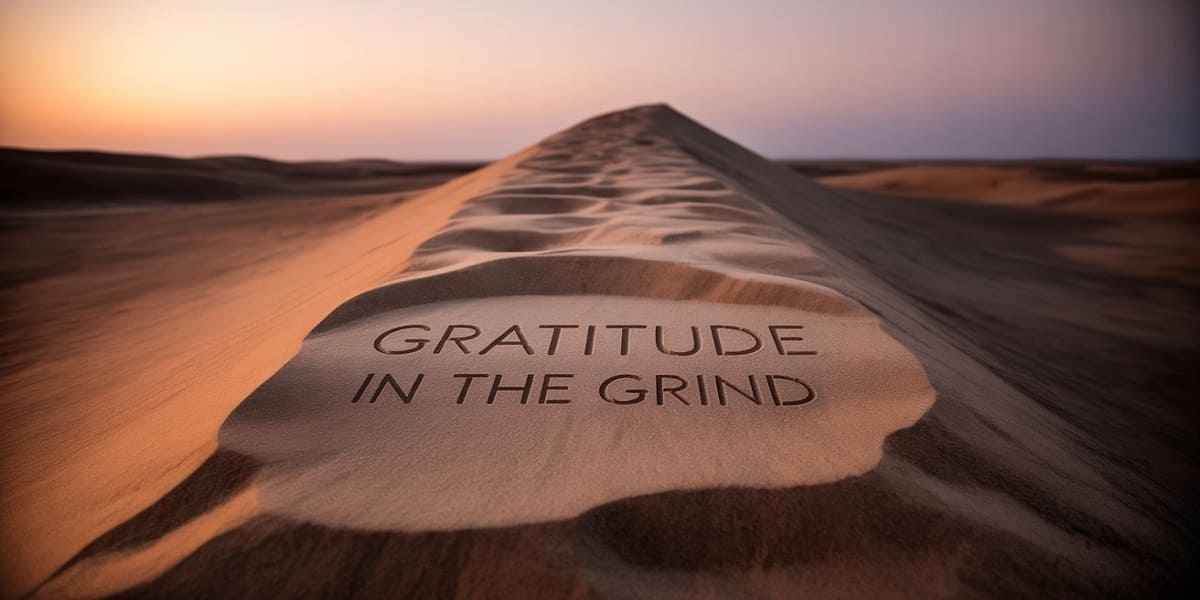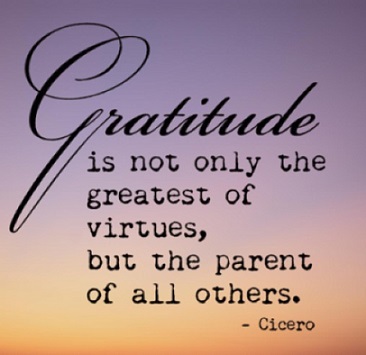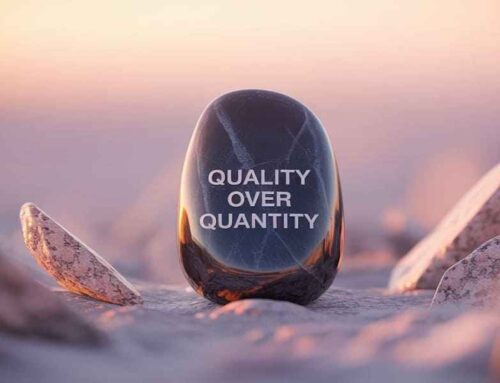
Does gratitude truly have a place when life feels like an endless grind?
You know the feeling, don’t you? That relentless pull, the weight of responsibilities, the never-ending to-do lists. You’re juggling work, family, personal aspirations and sometimes, it feels like you’re barely keeping your head above water. Every day can feel like a battle, a constant uphill climb.
The moments of joy seem fleeting, overshadowed by the sheer volume of things demanding your attention. You might be asking yourself, “How can I possibly feel grateful when I’m so exhausted, so stressed, so utterly overwhelmed?”
It’s a valid question. When the days blur into weeks and the weeks into months and the grind just keeps grinding, finding light can seem like an impossible task.
The Weight of the World: A Universal Experience
We’ve all been there. The alarm blares, signaling the start of another demanding day. Before your feet even hit the floor, your mind is racing, cataloging all the tasks ahead. Emails to answer, deadlines to meet, errands to run, meals to prepare, children to tend to, bills to pay.
The sheer volume of it can be suffocating. Perhaps you’re navigating a demanding career, striving to climb the corporate ladder, putting in long hours, sacrificing personal time for professional advancement.
Maybe you’re a parent, constantly balancing the needs of your children with your own, feeling stretched thin in every direction. Or perhaps you’re facing personal challenges – financial strain, health issues, relationship struggles – that add an extra layer of difficulty to an already complex existence.
This constant pressure, this relentless pursuit of progress, can lead to burnout. It manifests in various ways: a persistent feeling of fatigue, a loss of enthusiasm for things you once enjoyed, irritability, difficulty concentrating and even physical ailments.
It’s a vicious cycle. The more overwhelmed you feel, the less energy you have and the harder it becomes to find genuine joy or peace. You might feel isolated, believing that everyone else has it all figured out, while you’re just barely holding it together.
This sense of burden is a shared human experience, a testament to the complexities of modern life. We are all, in some way, navigating our own unique grind. We all seek a way of finding light.
Shifting Your Gaze: The Power of Perspective
But what if there was a way to navigate this grind not just with resilience, but with a sense of gratitude? What if, even in the midst of the chaos, you could uncover moments of appreciation, flickers of joy that illuminate the path forward?
This isn’t about ignoring your struggles or dismissing your very real challenges. It’s about a subtle yet profound shift in perspective. It’s about intentionally seeking out the good, no matter how small, even when the bad seems to dominate your landscape.
Consider the wisdom of Melody Beattie, who once said, “Gratitude makes sense of our past, brings peace for today and creates a vision for tomorrow.” This isn’t just a feel-good sentiment; it’s a powerful psychological tool.
When we intentionally practice gratitude, we retrain our brains to focus on what is working, what is positive, what we do have, rather than dwelling solely on what is lacking or what is difficult.
It’s like turning on a small lamp in a dimly lit room; it doesn’t make the darkness disappear entirely, but it certainly makes it easier to see where you’re going. It’s about acknowledging the burden, but also actively searching for the blessings. Are you able to find the silver linings, even on the cloudiest days?

The Science of Appreciation: Why Gratitude Works
This isn’t just wishful thinking. There’s a growing body of scientific research that highlights the profound impact of gratitude on our well-being. Studies have shown that practicing gratitude can:
- Improve emotional well-being: Grateful individuals tend to experience more positive emotions like joy, enthusiasm and optimism and are less prone to negative emotions like envy, resentment and regret. It acts as an emotional buffer against life’s stresses.
- Enhance physical health: Believe it or not, gratitude has been linked to better sleep quality, stronger immune systems and even reduced pain. When your mind is in a more positive state, your body often follows suit.
- Strengthen relationships: Expressing gratitude to others fosters stronger bonds, increases empathy and reduces feelings of loneliness. When you acknowledge the contributions of others, you build bridges, not walls.
- Increase resilience: Grateful people tend to cope better with adversity and bounce back more quickly from setbacks. They see challenges as opportunities for growth rather than insurmountable obstacles. This ability to bounce back is crucial when the grind feels relentless.
- Boost happiness: Perhaps most importantly, gratitude is a powerful predictor of overall happiness and life satisfaction. It’s not about being happy all the time, but about cultivating a deeper, more sustainable sense of contentment.
Think of it this way: your brain has a natural negativity bias. It’s wired to spot threats and potential problems, a survival mechanism from our ancestors. While useful for survival, in modern life, this bias can lead to constant worry and stress.
Gratitude acts as a counterweight, training your brain to also notice the good. It’s like strengthening a muscle. The more you use it, the stronger it becomes. Are you willing to exercise this mental muscle?
Finding Light in the Small Moments: Practical Gratitude in the Grind
So, how do you actually do this when you’re caught in the thick of it? How do you practice gratitude when your energy levels are plummeting and your patience is wearing thin?
It’s not about grand gestures or forced positivity. It’s about integrating small, consistent practices into your daily life. It’s about seeking out those tiny sparks of finding light.
- The Gratitude Journal: A Daily Reflection
This is perhaps the most well-known and effective gratitude practice. Each day, take a few minutes to write down 3-5 things you are grateful for. They don’t have to be monumental. It could be the warm cup of coffee you enjoyed this morning, a kind word from a colleague, the sun shining through your window or simply the fact that you have a roof over your head.
The key is consistency. Make it a habit, like brushing your teeth. Do it first thing in the morning to set a positive tone or before bed to reflect on the day’s blessings.
What small moments of joy did you experience today?
- Mindful Moments: Savoring the Simple
In our fast-paced lives, we often rush through experiences without truly savoring them. Mindful gratitude involves intentionally paying attention to and appreciating the present moment.
When you eat a meal, truly taste each bite. When you walk outside, notice the colors, the sounds, the smells. When you interact with a loved one, be fully present. These small acts of mindful attention can transform mundane moments into opportunities for appreciation.
Can you slow down for just a few minutes each day?
- Expressing Thanks: Sharing the Love
Don’t just feel gratitude; express it. Thank the barista for your coffee, your partner for their support, a colleague for their help. A genuine “Thank You” can not only brighten someone else’s day but also reinforce your own feelings of gratitude.
Write a thank-you note, send a text or simply offer a verbal acknowledgment. The act of expressing thanks creates a positive ripple effect.
Who could you thank today?
- Gratitude Meditation: Cultivating Inner Peace
There are many guided meditations available that focus specifically on gratitude. These can help you cultivate a deeper sense of appreciation and inner peace.
Even five minutes of focused gratitude meditation can shift your mindset and bring a sense of calm to a hectic day. Try it before you start your workday or during a lunch break.
Can you dedicate a few minutes to quiet reflection?
- Shifting Your Self-Talk: The Inner Dialogue
Pay attention to your inner dialogue. Are you constantly criticizing yourself or focusing on your shortcomings? Challenge those negative thoughts and replace them with more positive, grateful affirmations.
Instead of “I’m so overwhelmed,” try “I’m grateful for the opportunity to learn and grow, even when things are challenging.” Your inner voice has a powerful impact on your reality.
How can you speak more kindly to yourself?
- The “What Went Well” Exercise: Daily Reflection on Success
At the end of each day, instead of just dwelling on what went wrong, take a few minutes to reflect on “What Went Well.” It could be a small accomplishment, a positive interaction or simply making it through a tough day.
This shifts your focus from perceived failures to small victories, reinforcing a sense of progress and competence.
What positive things happened today, no matter how small?
Overcoming Obstacles to Gratitude in the Grind
It’s easy to talk about gratitude when things are going well. But what about when life truly feels heavy? When you’re facing significant challenges, practicing gratitude can feel disingenuous, even impossible. This is where the practice truly matters.
- Acknowledge Your Pain: Don’t deny your struggles. It’s okay to feel sad, angry or frustrated. Gratitude isn’t about putting on a happy face when you’re hurting. It’s about holding space for both the difficulty and the potential for good. Can you acknowledge your feelings without letting them consume you?
- Start Small: If “Big” gratitude feels out of reach, start with the absolute basics. Are you breathing? Do you have access to clean water? Is there a roof over your head? Sometimes, in the deepest valleys, even the most fundamental aspects of existence can be a source of gratitude. What is one tiny thing you can be grateful for right now?
- Focus on Lessons Learned: Even difficult experiences can offer valuable lessons. While you wouldn’t wish hardship upon yourself, you can look back and find ways in which you grew, became stronger or gained new perspectives. This doesn’t diminish the pain, but it allows for a different kind of appreciation. What have your challenges taught you?
- Connect with Others: When you’re struggling, reaching out to others can be incredibly helpful. Sharing your burden can lighten the load and witnessing the kindness of others can be a powerful source of gratitude. Who can you lean on or who can you offer support to? Sometimes finding light comes from shared experiences.
- Practice Self-Compassion: Be kind to yourself. There will be days when gratitude feels impossible. Don’t beat yourself up for it. Just gently redirect your focus when you can. This is a journey, not a destination. Are you treating yourself with the same kindness you would offer a friend?
Remember the words of Anne Frank: “Think of all the beauty still left around you and be happy.” Even in the darkest of times, there is always some light, however faint. Our task is to open our eyes to it.
Gratitude as a Tool for Resilience and Growth
The grind isn’t going away. Life will always present challenges, demands and periods of intense effort. But our relationship with the grind can change. When we infuse it with gratitude, we transform it from a relentless burden into a pathway for resilience, growth and deeper appreciation for life itself.
It’s not about being naive or ignoring the difficulties. It’s about choosing where you place your focus. It’s about recognizing that even within the struggle, there are moments of beauty, acts of kindness and reasons to be thankful.
It’s about cultivating a mindset that seeks out the good, even when the bad is shouting loudest. This isn’t just about feeling better; it’s about becoming stronger, more adaptable and ultimately, more fulfilled.
When you practice gratitude, you’re not just improving your emotional state; you’re actively building your capacity to handle whatever life throws your way. You’re developing a more positive outlook, which in turn influences your actions, your relationships and your overall experience of the world.
It’s a powerful cycle that can lift you out of the heaviest moments and illuminate your path forward. This deliberate act of seeking out and acknowledging the positives, the act of finding light, becomes a source of inner strength.
Your Invitation: Embrace the Light
So, as you navigate your own unique grind, I invite you to consider this profound truth: gratitude is not a luxury reserved for easy times. It is a vital tool, a guiding star and a powerful force that can help you find light even when life feels its heaviest. It’s a practice, a discipline and a choice.
Begin today. Start small. Look for the glimmers. Acknowledge the good. Express your thanks. Slowly but surely, you’ll begin to notice a shift. The grind might still be there, but your perspective will be different. You’ll find yourself more resilient, more joyful and more deeply connected to the richness of life, even amidst its challenges.
CTA
Ready to find more light in your life? Share one thing you’re grateful for in the comments below! Let people take inspiration from your experience.
FAQs
Q1: What does “Gratitude in the Grind” actually mean?
A1: “Gratitude in the Grind” means intentionally practicing appreciation and thankfulness even when life feels challenging, busy or overwhelming. It’s about finding positive aspects and moments of light amidst daily struggles and demands.
Q2: Why is it so hard to feel grateful when life is difficult?
A2: When life is heavy, our brains tend to focus on problems and challenges (The Negativity Bias). Stress and exhaustion also make it difficult to access positive emotions. The blog post explains that it’s a common human experience to feel overwhelmed, making gratitude seem counterintuitive at first.
Q3: Is practicing gratitude just about ignoring my problems?
A3: No, absolutely not. The post emphasizes that practicing gratitude is not about denying your struggles or forcing positivity. It’s about acknowledging the challenges while simultaneously seeking out and appreciating the good that still exists, no matter how small.
Q4: What are the main benefits of practicing gratitude, according to the post?
A4: The blog post highlights several scientifically-backed benefits, including improved emotional well-being, enhanced physical health, stronger relationships, increased resilience and an overall boost in happiness and life satisfaction.
Q5: How can I start practicing gratitude when I’m already so busy?
A5: The post suggests starting with small, consistent practices. Examples include keeping a gratitude journal for a few minutes daily, practicing mindful moments (savoring simple experiences), expressing thanks to others, trying gratitude meditation and consciously shifting your inner self-talk.
Q6: What if I truly can’t think of anything to be grateful for on a tough day?
A6: The post advises starting with the absolute basics if big gratitude feels out of reach. This could be as fundamental as being grateful for your breath, access to clean water or having a roof over your head. It also encourages acknowledging your pain first.
Q7: Is there a specific time of day that’s best for gratitude practices?
A7: While there’s no single “Best” time, the post suggests doing it first thing in the morning to set a positive tone for the day or before bed to reflect on the day’s blessings. Consistency is more important than a specific time.
Q8: How does gratitude help with resilience?
A8: The post explains that grateful people tend to cope better with adversity and recover more quickly from setbacks. By focusing on what went well or lessons learned, they see challenges as opportunities for growth rather than insurmountable obstacles, thus building resilience.
Q9: Can gratitude really change my brain?
A9: Yes, the blog post refers to scientific research suggesting that practicing gratitude can retrain your brain to focus on positive aspects, counteracting its natural negativity bias. This helps in cultivating a more positive outlook over time.
Q10: What if I feel awkward expressing gratitude to others?
A10: Expressing gratitude can be as simple as a genuine “Thank You.” The post notes that expressing thanks not only brightens someone else’s day but also reinforces your own feelings of gratitude, creating a positive ripple effect. Start with small, authentic expressions.














